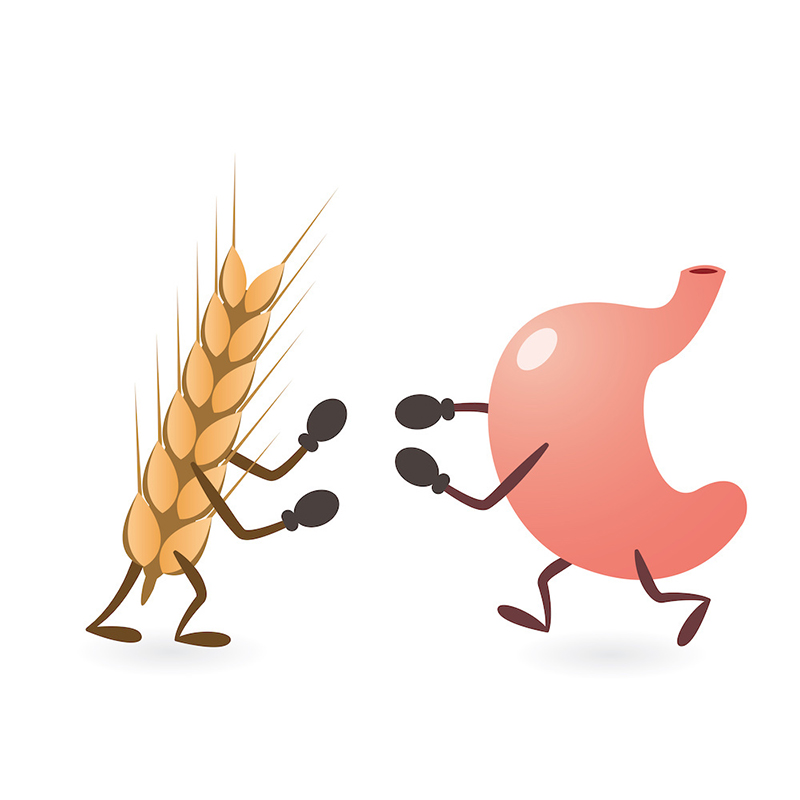Available Treatment & Promising Future
Celiac (US spelling) or coeliac (UK spelling) disease affects genetically predisposed people through the ingestion of gluten, which attacks primarily the small intestine. Several expert panels have estimated the impact of celiac disease at around 2 million at home and at 1% of the global population abroad.
It is a serious long-term, chronic, and hereditary digestive and autoimmune disorder, which goes by other names as well, namely, celiac sprue, non-tropical sprue, and gluten-sensitive enteropathy. Gluten being the catchword here, it refers to a group of proteins found in cereals such as wheat, barley and rye. Oats can be tolerated, but in small quantities. It should not be confused with gluten sensitivity, wheat intolerance, or a type of food allergy; it is none of these although they often present similar initial symptoms, which diverge as the sensitivity, intolerance or allergy develops.
Typical symptoms include all manner of gastrointestinal problems: chronic diarrhea, abdominal distention, malabsorption, loss of appetite (which hampers the normal absorption of nutrients and could lead to anemia in more severe cases), accelerated osteoporosis, liver failure, nervous system malfunctions, and abnormal growth patterns among children. Non-classic symptoms are even more common, and vary among patients.
Treatments
Then only current know functional treatment is following a lifelong gluten-free diet. As expressed by physicians and patients alike, “This is a sacrosanct pain in the behind!”, as many, many goods contain these three grains and, therefore, gluten. Although you can find innumerable on and offline lists of gluten-free and gluten-ridden foods, it is important to note that often the culprits are beyond the scope of common knowledge.
Odd foods that may contain gluten and that should be avoided include things like commercial or blue cheese and retail or restaurant-made broth, since both can and may be made with wheat and will contain even small traces of gluten. Miso may contain barley. Seitan and udon should be avoided altogether. Soy sauce and malt vinegar (anything malt or malted, really) are highly suspect. It’s important to note that forbidden what flours include spelt, triticale, and kamut. Instead, celiacs tend to resort to potato, rice, soy, or bean flour.
A gluten-free diet often, if not always, requires a novel approach to dieting and to your lifestyle. Celiacs have to be extra vigilant what they buy for lunch, at both school, work or in the streets when traveling… what they have at cocktail parties or friend’s dinners… even what they pick up at their very own refrigerator for a quick snack. Tight scrutiny eventually gets patients to shallow waters, whereby identifying potential and hidden dangers in all manner of sources eventually becomes second nature.
Neither plain meat nor fish, rice, fruits, and vegetables contain gluten. And the good news is that many establishments now cater to celiacs preparing exclusively gluten-free dishes or ample gluten-free options incorporated into the bigger menu.
Future Possibilities
Active scientific and dietary research has been underway for many years now and the future may look much brighter for celiac disease patients. These are the most promising:
- Pills that make the small intestine less pervious to gluten toxicity should a patient ingest even small traces
- Capsules that break down gluten, if ingested. This would make gluten non-toxic before it reached the small intestine.
- Drugs that greatly reduce the intestine’s inflammatory response to gluten.
- Therapeutic vaccines that restore gluten tolerance to prior celiac disease levels.
Sources:
https://celiac.org/about-celiac-disease/what-is-celiac-disease/
https://www.niddk.nih.gov/health-information/digestive-diseases/celiac-disease/definition-facts
http://www.cureceliacdisease.org/treatment/


